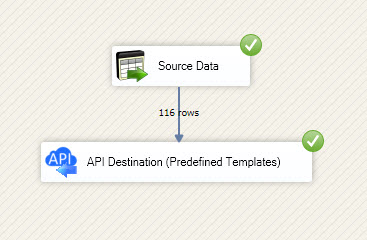Writing data in SSIS
In this section we will learn how to configure and use Power BI Connector in the API Destination to write data to Power BI.
Video tutorial
This video covers following and more so watch carefully. After watching this video follow the steps described in this article.
- How to download SSIS PowerPack for Power BI integration in SSIS
- How to configure connection for Power BI
- How to write or lookup data to Power BI
- Features about SSIS API Destination
- Using Power BI Connector in SSIS
Step-by-step instructions
In upper section we learned how to read data, now in this section we will learn how to configure Power BI in the API Source to POST data to the Power BI.
-
Read the data from the source, being any desired source component. In example we will use ZappySys Dummy Data Source component.
-
From the SSIS Toolbox drag and drop API Destination (Predefined Templates) on the Data Flow Designer surface and connect source component with it, and double click to edit it.
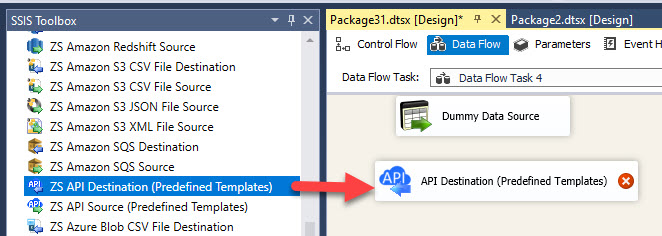
-
Select New Connection to create a new connection:
API Destination - Power BIConnect to your Power BI account and retrieve data, refresh datasets, etc.

-
Use a preinstalled Power BI Connector from Popular Connector List or press Search Online radio button to download Power BI Connector. Once downloaded simply use it in the configuration:
Power BI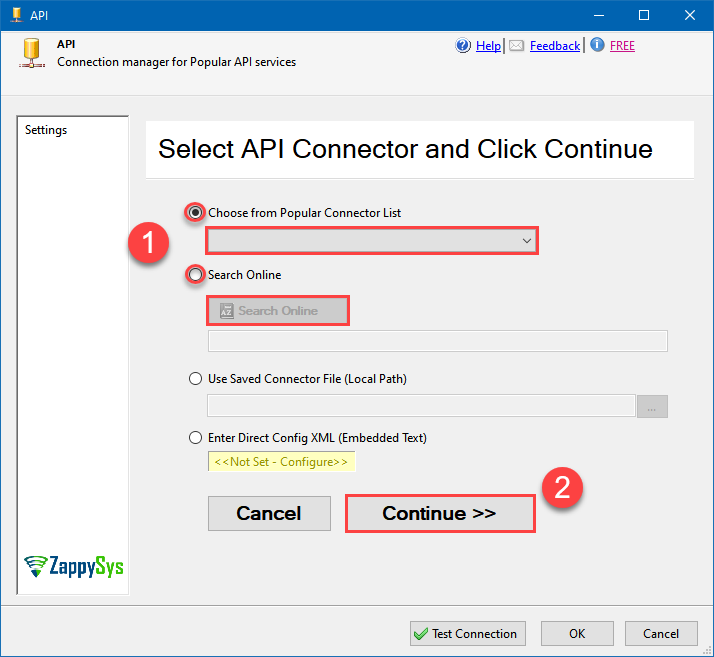
-
Proceed with selecting the desired Authentication Type. Then select API Base URL (in most cases default one is the right one). Finally, fill in all the required parameters and set optional parameters if needed. You may press a link Steps to Configure which will help set certain parameters. More info is available in Authentication section.
Power BI authentication
Use delegated access (User Credentials) whenever you want to let a signed-in user work with their own resources or resources they can access. Whether it's an admin setting up policies for their entire organization or a user deleting an email in their inbox, all scenarios involving user actions should use delegated access. [API reference]
Follow these simple steps below to create Microsoft Entra ID application with delegated access:
WARNING: If you are planning to automate processes, we recommend that you use a Application Credentials authentication method. In case, you still need to use User Credentials, then make sure you use a system/generic account (e.g.automation@my-company.com). When you use a personal account which is tied to a specific employee profile and that employee leaves the company, the token may become invalid and any automated processes using that token will start to fail.- Navigate to the Azure Portal and log in using your credentials.
- Access Microsoft Entra ID.
-
Register a new application by going to App registrations and clicking on New registration button:
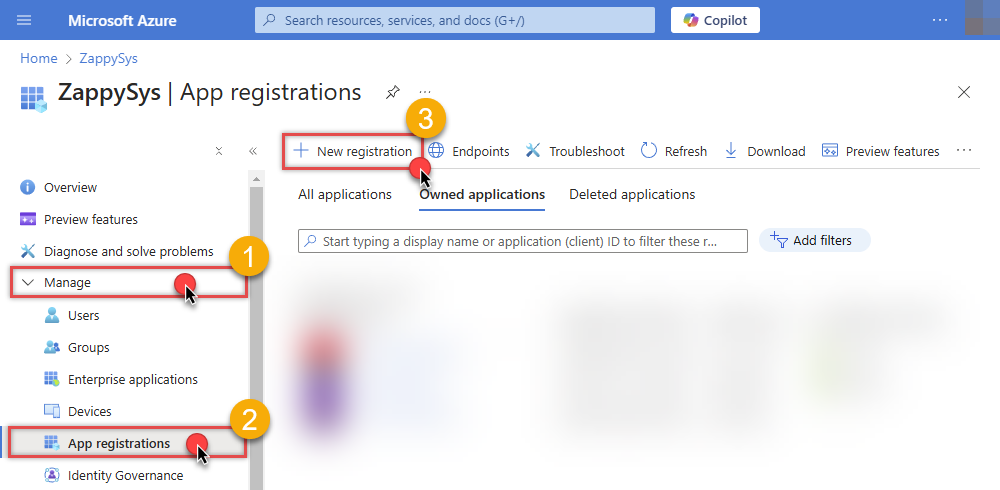 INFO: Find more information on how to register an application in Graph API reference.
INFO: Find more information on how to register an application in Graph API reference. -
When configuration window opens, configure these fields:
-
Supported account type
- Use
Accounts in this organizational directory only, if you need access to data in your organization only.
- Use
-
Supported account type
-
Redirect URI:
- Set the type to
Public client/native (mobile & desktop). - Use
https://zappysys.com/oauthas the URL.
- Set the type to
-
After registering the app, copy the Application (client) ID for later:

-
Copy OAuth authorization endpoint (v2) & OAuth token endpoint (v2) URLs to use later in the configuration:
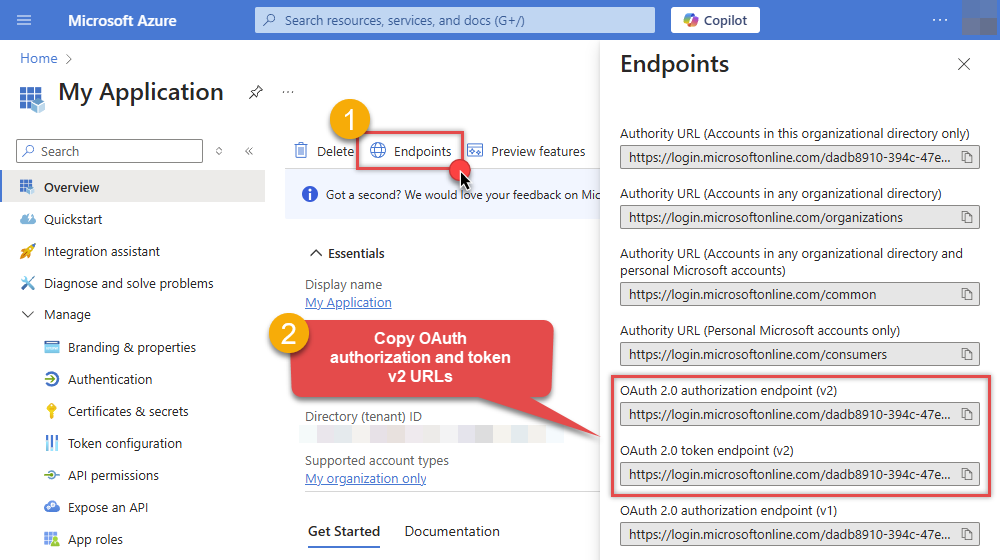
-
Now go to SSIS package or ODBC data source and use the copied values in User Credentials authentication configuration:
- In the Authorization URL field paste the OAuth authorization endpoint (v2) URL value you copied in the previous step.
- In the Token URL field paste the OAuth token endpoint (v2) URL value you copied in the previous step.
- In the Client ID field paste the Application (client) ID value you copied in the previous step.
-
In the Scope field use the default value or select individual scopes, e.g.:
-
offline_access -
https://analysis.windows.net/powerbi/api/Workspace.Read.All -
https://analysis.windows.net/powerbi/api/Dataset.Read.All -
https://analysis.windows.net/powerbi/api/Dataset.ReadWrite.All
-
- Press Generate Token button to generate Access and Refresh Tokens.
- Click Test Connection to confirm the connection is working.
- Optional step. Choose Default Workspace from the drop down menu.
- Choose Default Dataset from the drop down menu.
- Done! Now you are ready to use the API Connector!
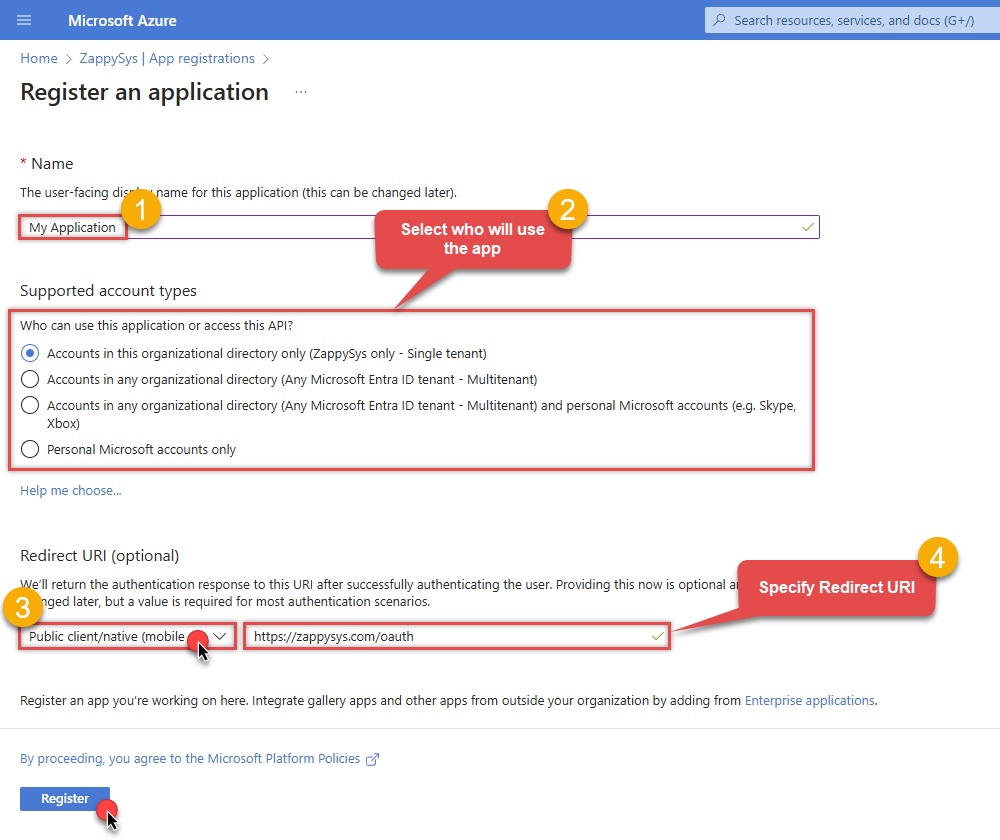
API Connection Manager configuration
Just perform these simple steps to finish authentication configuration:
-
Set Authentication Type to
User Credentials [OAuth] - Optional step. Modify API Base URL if needed (in most cases default will work).
- Fill in all the required parameters and set optional parameters if needed.
- Press Generate Token button to generate the tokens.
- Finally, hit OK button:
Power BIUser Credentials [OAuth]https://api.powerbi.com/v1.0/myorgRequired Parameters Authorization URL Fill-in the parameter... Token URL Fill-in the parameter... Client ID Fill-in the parameter... Scope Fill-in the parameter... Default Dataset (select after generating tokens) Fill-in the parameter... Optional Parameters Client Secret Redirect URI (must match App Redirect URI) Default Workspace (Keep Empty for My Workspace - select after generating tokens) RetryMode RetryWhenStatusCodeMatch RetryStatusCodeList 429|503 RetryCountMax 20 RetryWaitTimeMs 1000 RetryMultiplyWaitTime True Login options 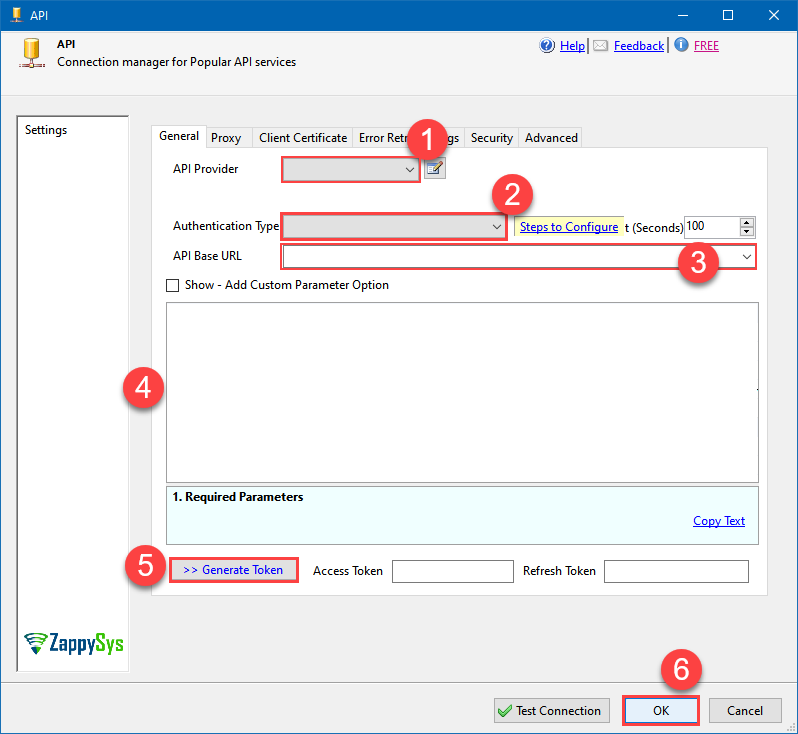
-
Select the desired endpoint, change/pass the properties values, and go to the Mappings tab to map the columns.
API Destination - Power BIConnect to your Power BI account and retrieve data, refresh datasets, etc.
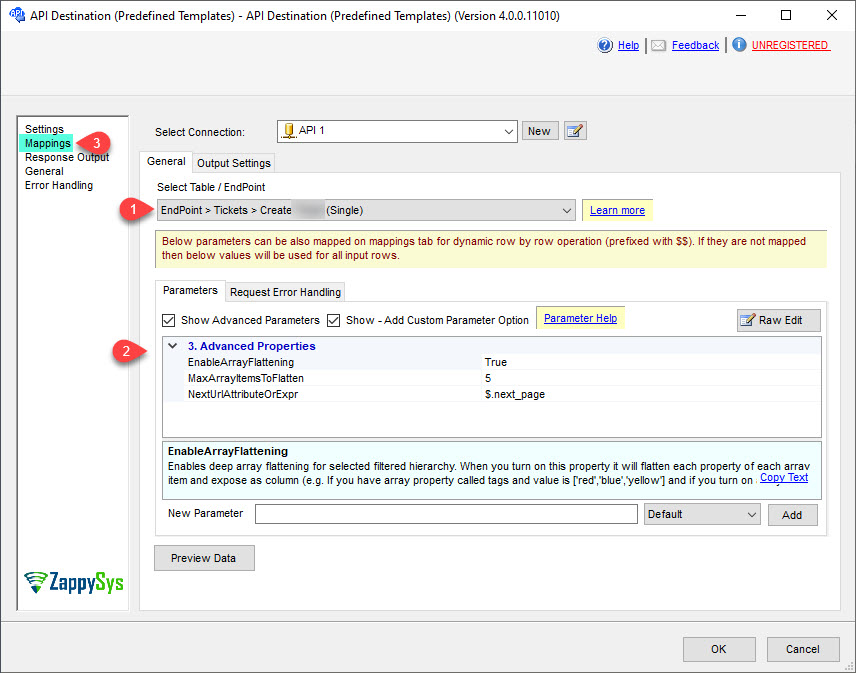
-
Finally, map the desired columns:
API Destination - Power BIConnect to your Power BI account and retrieve data, refresh datasets, etc.
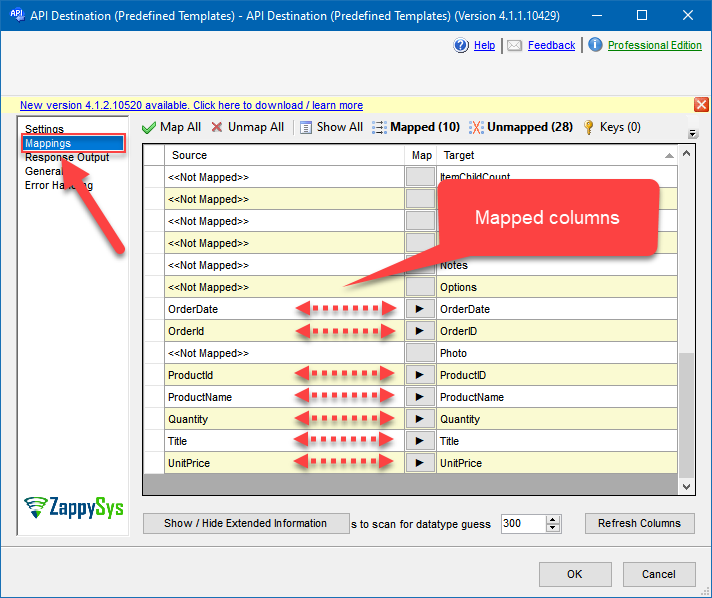
-
That's it; we successfully configured the POST API Call. In a few clicks we configured the Power BI API call using ZappySys Power BI Connector
